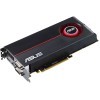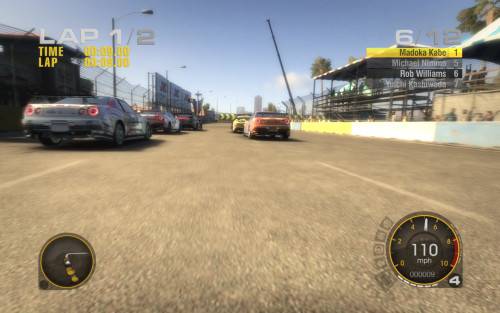- Qualcomm Launches Snapdragon 4 Gen 2 Mobile Platform
- AMD Launches Ryzen PRO 7000 Series Mobile & Desktop Platform
- Intel Launches Sleek Single-Slot Arc Pro A60 Workstation Graphics Card
- NVIDIA Announces Latest Ada Lovelace Additions: GeForce RTX 4060 Ti & RTX 4060
- Maxon Redshift With AMD Radeon GPU Rendering Support Now Available
ASUS Radeon EAH5850

If we had an award for the “best bang for the buck”, it would require little thinking to give it to ATI’s Radeon HD 5850. For the price, it offers incredible power, superb power consumption, and of course, DirectX 11 support. We’re taking a look at ASUS’ version here, which along with Dirt 2, includes a surprisingly useful overclocking tool.
Page 8 – Race Driver: GRID
If you primarily play games on a console, your choices for quality racing games are plenty. On the PC, that’s not so much the case. While there are a good number, there aren’t enough for a given type of racing game, from sim, to arcade. So when Race Driver: GRID first saw its release, many gamers were excited, and for good reason. It’s not a sim in the truest sense of the word, but it’s certainly not arcade, either. It’s somewhere in between.
The game happens to be great fun, though, and similar to console games like Project Gotham Racing, you need a lot of skill to succeed at the game’s default difficulty level. And like most great racing games, GRID happens to look absolutely stellar, and each of the game’s locations look very similar to their real-world counterparts. All in all, no racing fan should ignore this one.
Manual Run-through: For our testing here, we choose the city where both Snoop Dogg and Sublime hit their fame, the LBC, also known as Long Beach City. We choose this level because it’s not overly difficult, and also because it’s simply nice to look at. Our run consists of an entire 2-lap race, with the cars behind us for almost the entire race.



Despite being quite the powerful card, the GTX 295 doesn’t perform too well in games that doesn’t take advantage of multi-GPU setups. GRID is the obvious exception, and as a result, the HD 5850 falls right behind it. Still, it offers extremely good performance, at trust me, at 80+ FPS in a racing title, that kind of performance is appreciated.
|
Graphics Card
|
Best Playable
|
Min FPS
|
Avg. FPS
|
|
ATI HD 5870 1GB (Reference)
|
2560×1600 – Max Detail, 4xAA
|
87
|
106.43
|
|
NVIDIA GTX 295 1792MB (Reference)
|
2560×1600 – Max Detail, 4xAA
|
84
|
103.958
|
|
ATI HD 5850 1GB (ASUS)
|
2560×1600 – Max Detail, 4xAA
|
68
|
84.732
|
|
ATI HD 4890 1GB (Sapphire)
|
2560×1600 – Max Detail, 4xAA
|
57
|
70.797
|
|
NVIDIA GTX 285 1GB (EVGA)
|
2560×1600 – Max Detail, 4xAA
|
54
|
66.042
|
|
NVIDIA GTX 275 896MB (Reference)
|
2560×1600 – Max Detail, 4xAA
|
52
|
63.617
|
|
ATI HD 4870 1GB (Reference)
|
2560×1600 – Max Detail, 4xAA
|
51
|
63.412
|
|
ATI HD 5770 1GB (Reference)
|
2560×1600 – Max Detail, 4xAA
|
45
|
56.980
|
|
NVIDIA GTX 260 896MB (XFX)
|
2560×1600 – Max Detail, 4xAA
|
45
|
54.809
|
|
NVIDIA GTX 250 1GB (EVGA)
|
2560×1600 – Max Detail, 4xAA
|
35
|
43.663
|
|
ATI HD 4770 512MB (Gigabyte)
|
1920×1080 – Max Detail, 4xAA
|
55
|
69.403
|
GRID offers anti-aliasing options above 4xAA, but in all my tests in the past, they’re extremely buggy, so they’re a non-option. Given that, and the performance of our 2560×1600 setting, that remains our best playable.
Support our efforts! With ad revenue at an all-time low for written websites, we're relying more than ever on reader support to help us continue putting so much effort into this type of content. You can support us by becoming a Patron, or by using our Amazon shopping affiliate links listed through our articles. Thanks for your support!






